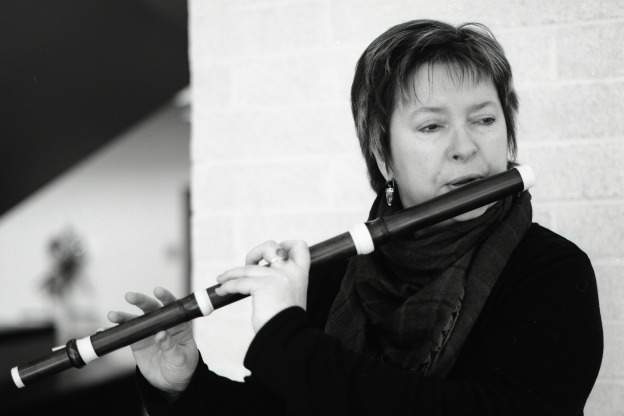
We'll start with a piece from The Dublin Drag Orchestra: Fantasy No. 1 from the Consort Set a5 in A minor by William Lawes. We'll be hearing more from this ensemble later in the program.
Diomedes Cato
Sigismund III was a busy man. Elected to the throne of the Polish-Lithuanian Commonwealth in 1587, Sigismund was also trying to rule Sweden, defend his claims to Moldova, and overhaul election law.
But there's always time for art, and Sigismund dabbled in painting and goldsmithing. He also employed musicians, not least among them the Italian-born lutenist Diomedes Cato.
Let's listen to what Sigismund might have heard: a composition by Cato for his preferred instrument, the lute, played by Marcin Zalewski.
Cato arrived in Poland as a very young boy, moving with his family to escape Protestant persecution in Italy. He wrote all kinds of music for lute, from galliards and other dances of the day to rich fantasias to transcriptions of Italian madrigals. In a sense, Cato was simply writing what he wanted to play.
Some of his lute pieces may have incorporated bits of Polish folk music: Cato wrote eight chorae polonicae, or polish dances. We'll hear a version of one played not on lute, but on organ by Boguslaw Grabowski.
Not all Cato's compositions were for his favorite instrument. He also wrote Polish-flavored sacred songs, as well as fantasias and other works for consorts of instruments.
Cato may be little-known today, but he used to be famous: word of his skill spread through all of Sigismund's territories, and one of Cato's fantasias even landed a place in a British Manuscript, a kind of "greatest hits" album for lute.
Let's return to the composer's preferred instrument and hear one more piece for the lute, a riff on the notes re mi fa sol la performed by Joachim Held.
My Tunes!
Ever wonder what the musicians you hear on Harmonia are listening to on their own time? What's on the playlists of your favorite players, teachers, and scholars of early music? This hour we're bringing you My Tunes, a series of segments in which we ask people who work and play in early music the simple question: What are you listening to right now?
Alison Melville is a Toronto-based flute and recorder player with musical interests that jump genres and centuries. She plays renaissance and medieval music with The Toronto Consort, baroque music with Tafelmusik, and a mix of early music, new music, traditional music, and improvisation with the genre-hopping Ensemble Polaris. She also melds music to poetry, film, narrative, and visual art in a multidisciplinary feast dubbed The Bird Project.
We couldn't wait to ransack Alison's mp3 player!
First up is a Ciaconna à basso solo by little-known composer Giuseppe Colombi, recorded by the up-and-coming Canadian cellist Elinor Frey.
Alison explains:
"The earliest solo rep for cello can be challenging to bring to life...Elinor Frey sounds so completely at home with this music. She sounds like she's having a conversation with the composer and the centuries in between don't matter."
We're listening to music tracks currently "in rotation" for flutist and recorder player Alison Melville. She calls this next track-a piece by John Dowland interpreted by The Dublin Drag Orchestra-one of the "Hurtin' songs from the 17th century."
It was the text that first caught Alison's ear:
"I love the music of John Dowland, and especially his consort songs. The singer here is clever and sounds as though they love the text, so not a single moment of meaning is lost …And, though this has absolutely nothing to do with the music, the photos of the band, in drag, are fabulous."
Finally, we'll hear to a selection by one of Alison's own performing ensembles, the Toronto Consort. The Consort was gearing up for a Christmas concert, which was to include "Convidando esta la noche" by the Mexican composer Juan Garcia de Zespedes, a piece featured on the Consort's CD Navidad, an exploration of Latin American and Spanish Christmas music.
According to Alison:
"The repertoire isn't heard a lot, and it's so much fun to play. Making this recording was a source of much creativity and joy…which is not often to be said for the recording process."
Featured: Forte e Dolce
Our featured recording Forte e Dolce by The Baroque Chamber Orchestra of Colorado explores seventy-five years of musical heritage from 17th- and 18th-century Italy and celebrates renaissance Italy's vibrant tradition of improvisation. The CD features chamber and solo pieces, including works for trumpet and strings, by composers such as Giuseppe Torelli, Antonio Bertali, Petronio Franceschini, and more.
The Baroque Chamber Orchestra of Colorado made its Denver debut in 2005. Under the direction of harpsichordist Frank Nowell and baroque violinist Cynthia Miller Freivogel, the period-instrument ensemble provides outstanding performances and educational outreach throughout the Denver metropolitan area.
Break and Theme music
:30, Lute Music of the Renaissance, Joachim Held, Hanssler Classics (2005), Joachim van den Hove, Passagio (excerpt of 0:39)
:60, La Voce Del Violoncello, Elinor Frey, Passacaille 2013, Tr. 1: Giuseppe Colombi, Tromba a Basso solo (excerpt of 2:48)
:30, Navidad, The Toronto Consort, Marquis 2012 MAR 81435, Tr. 15: Xácaras (excerpt of 3:49)
Theme:Â Danse Royale, Ensemble Alcatraz, Elektra Nonesuch 79240-2 1992 B000005J0B, T.12: La Prime Estampie Royal
The writers for this edition of Harmonia are Anne Timberlake and Laura Osterlund.
Learn more about recent early music CDs on the Harmonia Early Music Podcast. You can subscribe on iTunes or at harmonia early music dot org.









